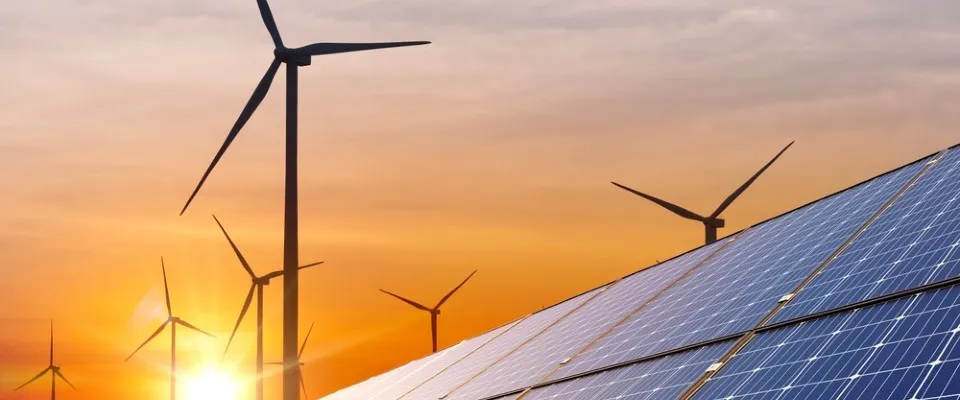If you’ve ever looked at your electricity bill and wondered where all the energy comes from — or what it means when your utility company says it’s “powered by renewables” — you’re not alone. More and more renters are interested in understanding how our energy sources can impact the planet. If you’re trying to save money, reduce your carbon footprint, or make informed choices, understanding the difference between renewable and nonrenewable resources is a great place to start.
What are renewable resources?
Renewable resources are energy sources that naturally replenish over time. These include:
– Solar power (from the sun)
– Wind energy
– Hydropower (from flowing water)
– Geothermal (heat from the earth)
– Biomass (organic materials like plants and waste)
These sources are considered sustainable because they don’t run out in a human lifetime and have a much lower environmental impact than fossil fuels. For example, panels capture solar energy by absorbing sunlight, and turbines harness wind power by using spinning blades to turn a generator to produce electricity. These technologies are becoming more common across the U.S. as their costs drop and clean electricity demand rises.

Renewables reached 24% of total U.S. electricity generation in 2024, marking a new record. This includes wind, solar, biomass, geothermal, hydropower, and waste-to-energy. To put this in perspective, in 2013, renewables were around 13% of U.S. power generation. By almost doubling in just over a decade, this growth shows steady and accelerating momentum.
What are nonrenewable resources?
Nonrenewable resources are finite and cannot be used once they’re depleted. These include:
– Coal
– Oil
– Natural gas
– Nuclear energy (nonrenewable due to limited uranium supply)
Nonrenewables are still the dominant source of power in most parts of the country due to their reliability — they’ve been part of the country’s energy system and economy for over a century. However, burning fossil fuels releases carbon dioxide and other pollutants that contribute to climate change, producing smog, and causing health problems for residents in the area.
Coal and natural gas plants are also among the biggest consumers of water in the energy sector and are linked to environmental degradation like mining and pipeline spills.
Why do renewable and nonrenewable resources matter to renters?
You might be thinking: “I’m just renting. I don’t own solar panels or a wind farm — why does it matter?” Even if you don’t own a house, you still use electricity, gas, and water every day. So, the sources of that power may affect your utility bill, the environment around you, your health, or even the economy, as green energy jobs are on the rise.
In many states, renters can choose their electricity provider or opt for green power programs in their apartment buildings. That means you can even support renewables without needing to install anything.
Incentives for going green
There are plenty of reasons why more and more people are choosing renewable energy over nonrenewable sources:
1. Lower electricity costs over time
While the upfront costs of setting up solar panels or wind systems can be high (usually for homeowners), the price of electricity from renewable sources has dropped significantly. In many areas, utilities are offering green energy plans at competitive rates. That means you might actually pay less while helping the planet.
2. Cleaner air and water
Burning fossil fuels releases air pollutants like sulfur dioxide and nitrogen oxides. Inhaling these pollutants can lead to respiratory problems, especially if they’re released in densely populated areas. On the opposite side, renewables don’t release those pollutants. So, switching to a green energy plan helps clean up the air and water — not just for future generations, but also for you and your neighbors.

3. Support for green jobs and innovation
By choosing renewables, even as a renter, you can help grow the green energy economy. According to the U.S. Bureau of Labor Statistics, solar installers and wind turbine technicians are two of the fastest-growing jobs in the country. More demand means more innovation and more opportunities for workers in this field.
4. Reducing your carbon footprint
By opting for electricity from renewable sources or cutting back on energy use, you directly reduce your carbon emissions. That means you’re helping fight climate change from your apartment. So, your choices as a renter matter more than you think, especially in cities where millions of small decisions add up fast.
What can you do right now?
Here are a few easy steps you can take today to support renewable energy:
✅ Check your utility provider
Many states let you choose your electric supplier. Check if your area offers green energy plans that use 100% renewable electricity. Even if you live in an apartment, you may be able to switch plans by simply contacting the power provider or filling out an online form.
One option to consider is ResidentShield Power, a green energy provider that offers 100% renewable electricity plans. The switch is simple and you don’t even have to notify your current provider, as ResidentShield Power handles the transition for you. Be sure to check your current electricity plan, as some providers may charge a small cancellation fee if you end a contract early.
✅ Reduce your electricity use
Use energy-efficient appliances, switch to LED bulbs, and unplug chargers when not in use. The less energy you use, the less your utility needs to generate, no matter the source. Plus, you’ll benefit from lower electricity bills.
✅ Talk to your landlord
Ask if your building could consider community solar or other local programs. Some utilities offer incentives for multi-family buildings to go green.
✅ Stay informed
Follow updates from your electricity provider and sources like the U.S. Department of Energy, the U.S. Energy Information Administration, or the U.S. Environmental Protection Agency to understand how policies and prices are changing near you.

The debate on renewable and nonrenewable resources isn’t just for scientists or politicians. It impacts everybody, even when you’re renting. Choosing renewables means cleaner air, lower bills, and a better future. Even if you’re not ready to go fully green, every little bit helps, so check the plans provided by electric companies in your area.
And next time you flip on a light in your apartment or power up your laptop, think about where that electricity comes from and how you can make a small change that adds up to something big.
